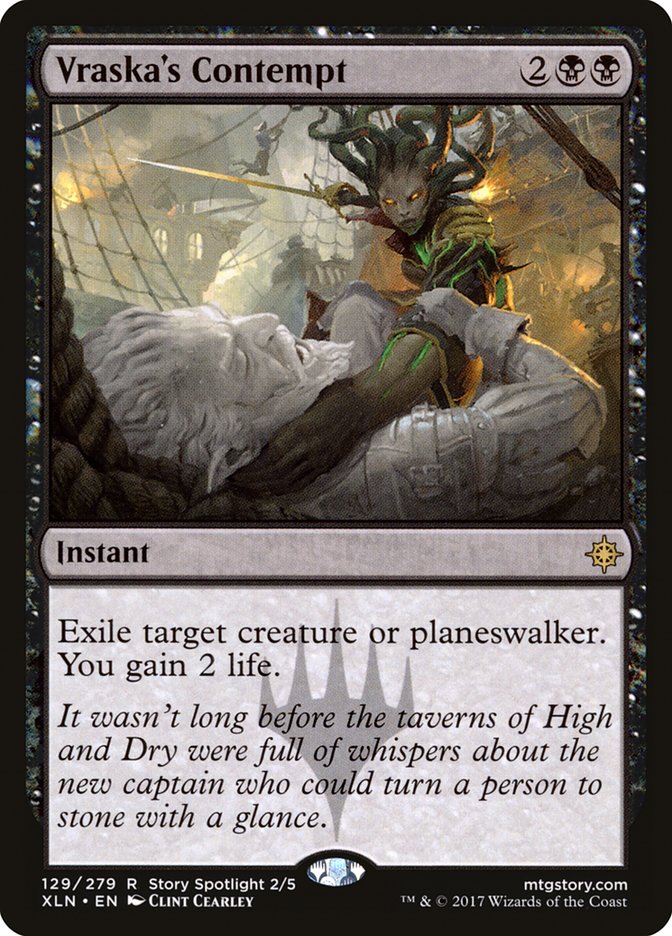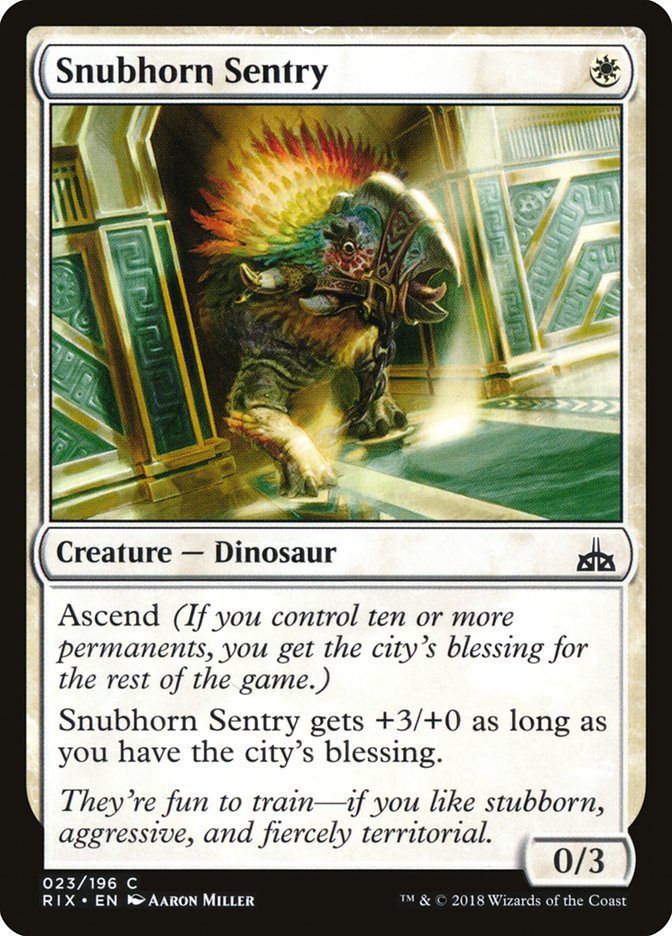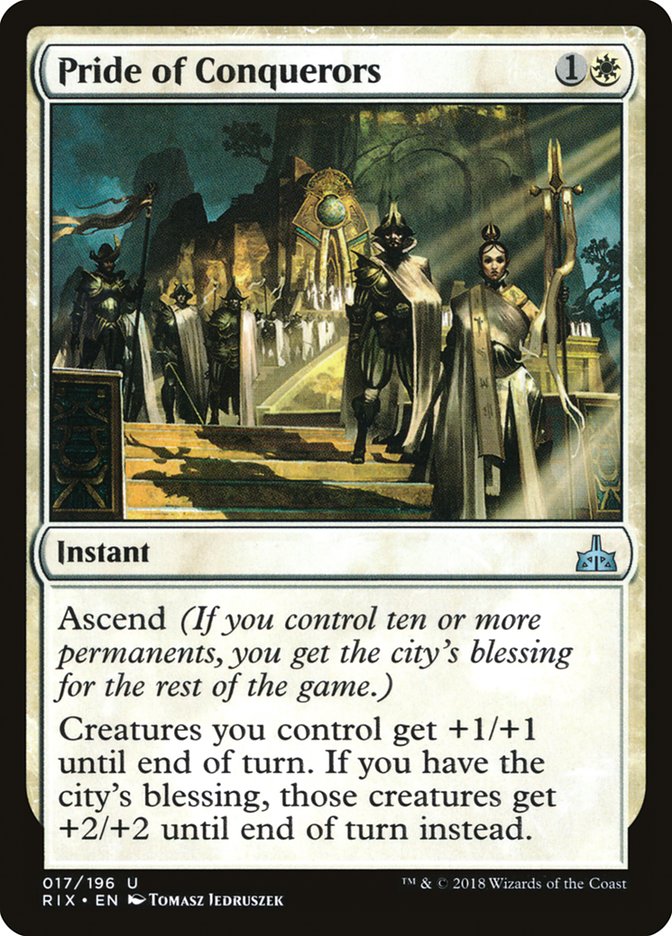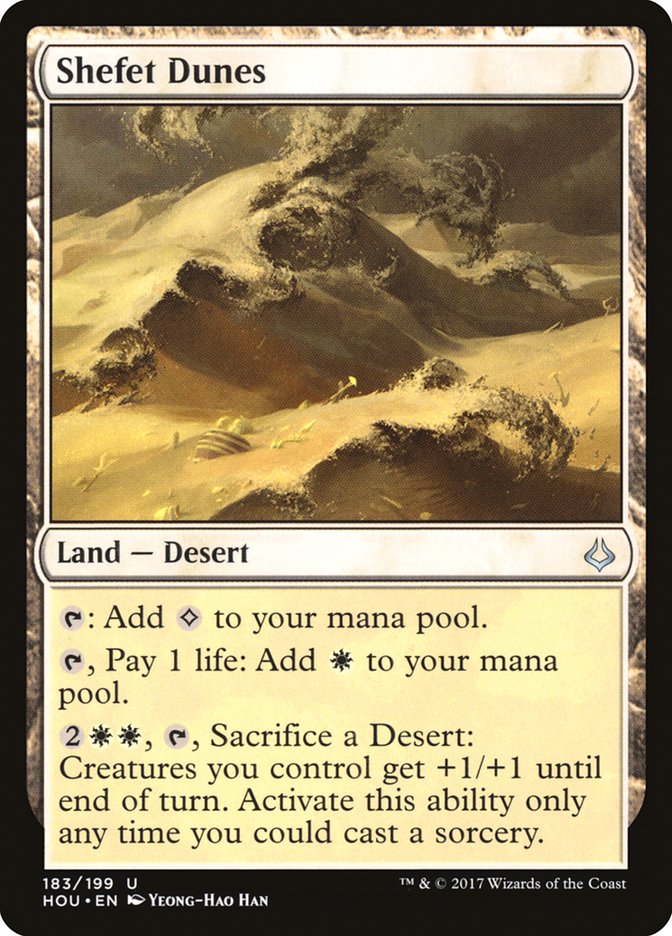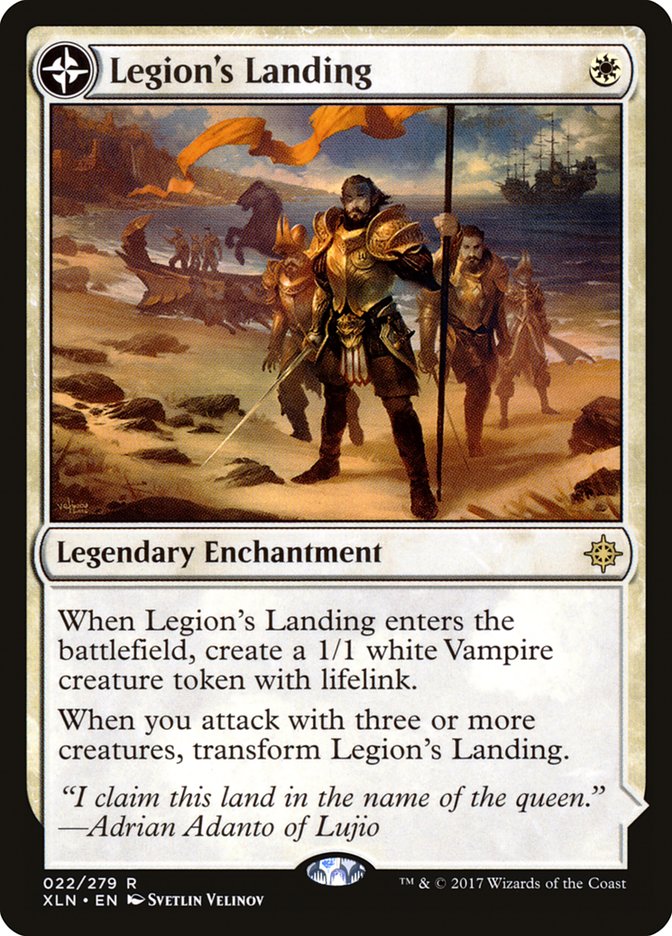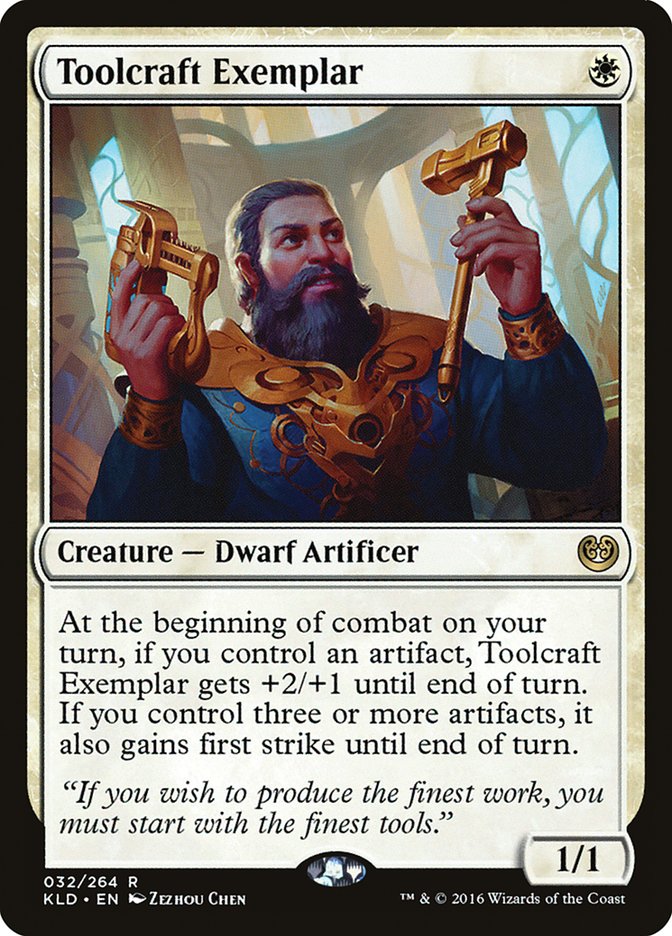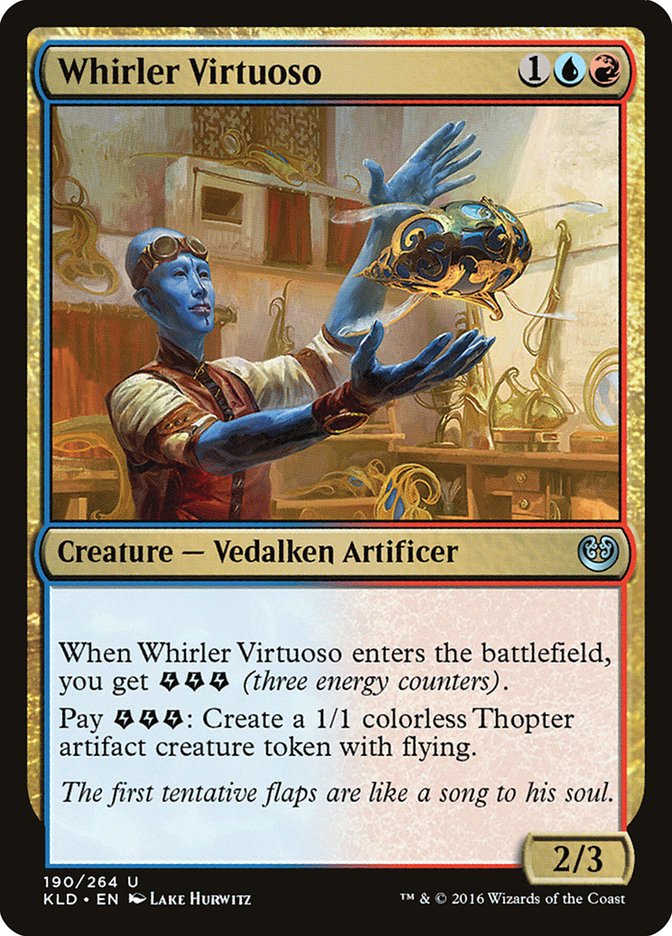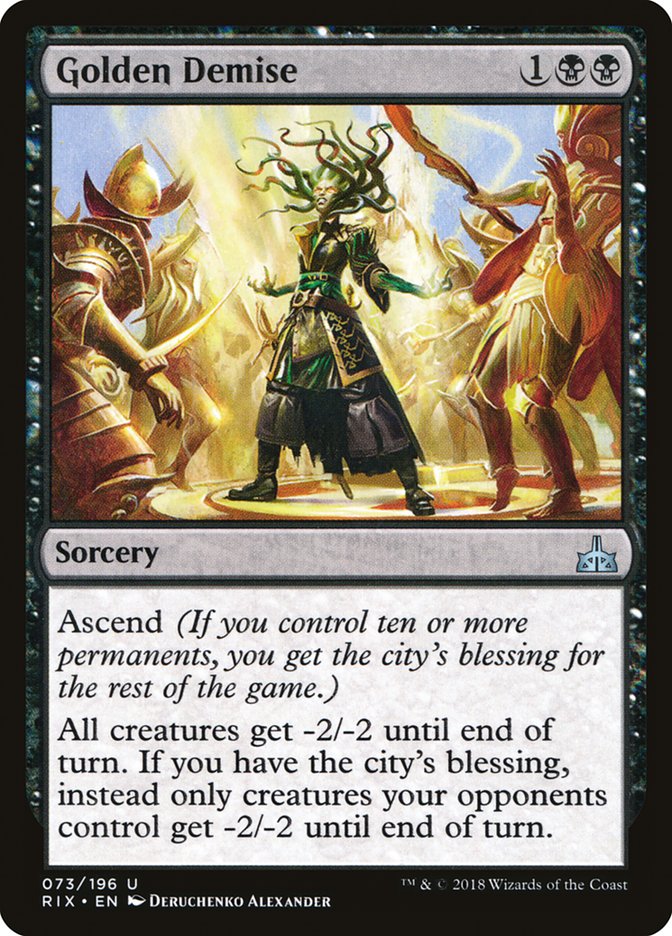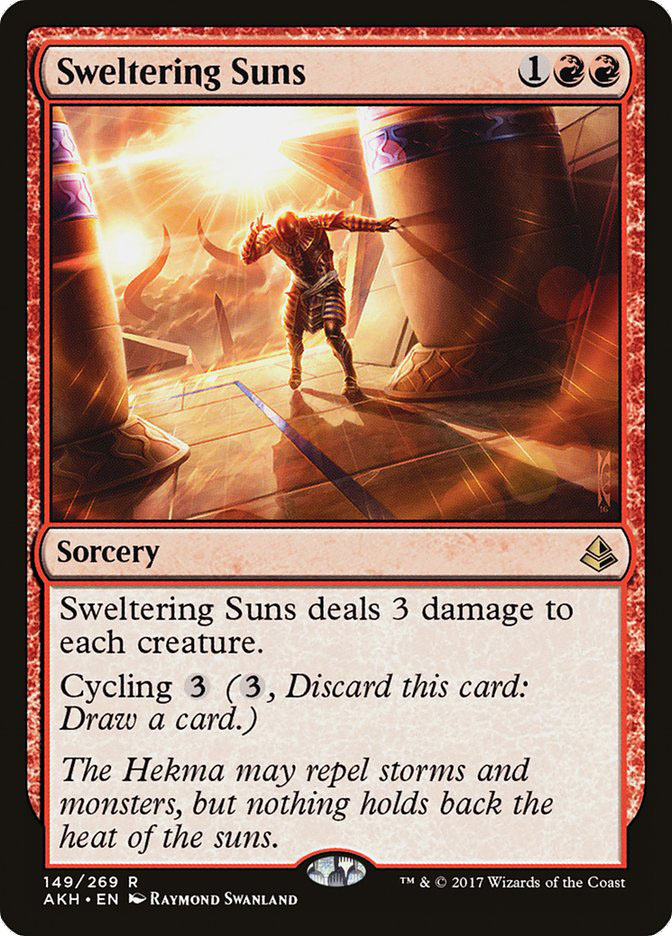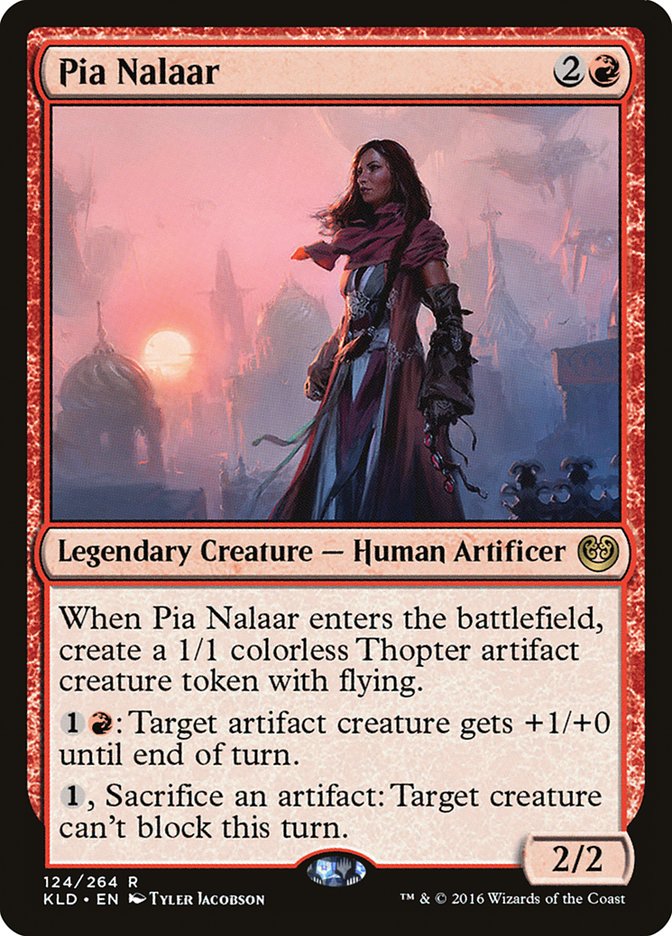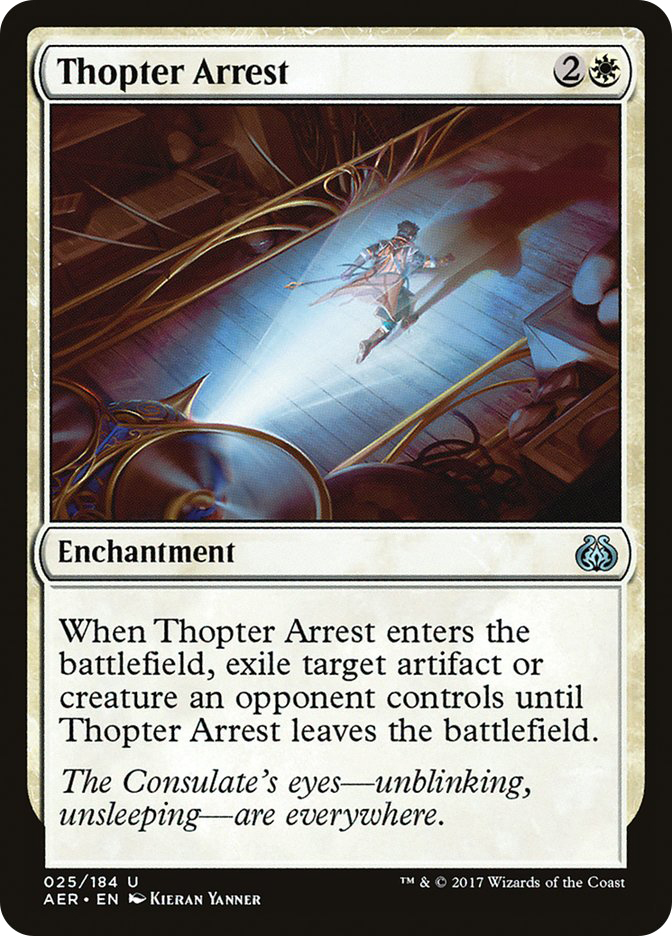This weekend I played Andrew Baeckstrom’s Mono-White Ascend deck at Grand Prix Memphis to a “bread and butter” 11-4 finish. During the event the deck caught a lot of attention, since it’s doing something pretty different from other decks in the format. A lot of people asked for the list and a write-up, so here we are. Let’s start with the list:
Creatures (23)
- 4 Bomat Courier
- 4 Scrapheap Scrounger
- 4 Toolcraft Exemplar
- 4 Adanto Vanguard
- 4 Skymarcher Aspirant
- 3 Snubhorn Sentry
Lands (21)
Spells (16)

This deck is really straightforward: get a lot of creatures onto the battlefield, attack, do something that makes all your creatures bigger, win. Rather than spending a lot of time on the exact gameplan, let’s talk about the deck’s strengths and weaknesses.
First and foremost, this is a fantastic Game 1 deck because it’s doing something very unusual in the format, and that thing requires specific answers that people just aren’t playing a lot of. This is probably the fastest deck in the format from a goldfishing perspective because all of its cards snowball so quickly when undisrupted. The disadvantage is that because so many of the cards rely on other cards to work properly, it’s relatively vulnerable to interaction.
This is where its positioning in the format makes a big difference. Currently, most games are decided by hard-to-answer high-impact four- and five-mana threats, which means most removal is chosen to interact well with them. Almost everyone who can cast Vraska’s Contempt is playing four copies, for example. If more decks looked like Mono-White Ascend, no one would play Vraska’s Contempt – you’re paying four mana for something you can essentially do for one mana.
Even the aggressive decks generally play threats that are resilient or have haste, so everyone needs to use removal spells with advantages like exiling and instant speed. People need to play so many of these removal spells that it really doesn’t make sense to play any sweepers, and sweepers are the real way to beat a deck like this. Settle the Wreckage and Fumigate are the most-played sweepers, but it’s easy to play around Settle the Wreckage and Fumigate is often a turn too slow, since this deck can kill on Turn 4 pretty often.
The independent power level of the deck overall is very high – Bomat Courier, Scrapheap Scrounger, Toolcraft Exemplar, Legion’s Landing, and Adanto Vanguard are all fantastic aggressive cards. The other creatures are a little worse, but not bad – yes, Snubhorn Sentry looks odd, but it does play well in this deck, and Pride of Conquerors is fantastic.
The other thing that sets this deck apart in this format is the mana. I like to play monocolored decks in Standard whenever I can because there are always real costs associated with adding colors in Standard, and this format certainly isn’t an exception. Last week, Owen Turtenwald had this to say about it:
“The biggest takeaway for me in Standard right now is that the mana is really bad. I’m going to repeat myself because this statement should inform your deck choice for the foreseeable future – manabases right now do not meet basic standards for what I deem to be acceptable levels of consistency, with the exception of Mono-Red Aggro. The reason Mono-Red wins as much as it does is because it’s a one-color deck with extremely consistent mana.“
This deck has the best mana –the lands don’t look as clean as playing fourteen basics or something, but the drawbacks rarely matter and Shefet Dunes in a deck like this is the best utility land in the format. The deck also gets to play only 21 lands while still being able to activate Shefet Dunes thanks to being fantastic at transforming Legion’s Landing, another exceptionally strong part of this deck’s manabase, and consistency that allows it to keep a lot of one-land hands.
The other thing I love about this deck is the sideboard. Legion’s Landing and Scrapheap Scrounger already give the deck a little resilience in the mid-game against control decks who can answer some of your first threats, but when control decks have a chance to add sweepers to their deck in sideboarding, this deck gets to mitigate its exposure by adding Vehicles and planeswalkers, allowing the deck to play a little bit more like the Mardu Vehicle decks it begins to resemble, which were always known for being good against sweepers.
Against opposing creature decks, in testing, we found that games would very frequently be determined by fliers – I’d get my opponent low enough that they couldn’t risk attacking because a counterattack could kill them, but I wouldn’t be able to attack them because I’d have to throw away too many creatures running into their larger blockers, so we’d sit and stare at each other unless someone had a flier. These Vehicles in the sideboard double as a way to win the flying game, and Thopter Arrest is the perfect answer to an opposing Aethersphere Harvester or Rekindling Phoenix.
So what’s not to love? Why might this not be the best deck in Standard?
The biggest internal problem with the deck itself, rather than how it matches up against any particular deck, is that it mulligans horribly. I observed during the tournament that I think this would be the best deck in Standard if players started games of Magic with eight cards in their hand, while it would be unplayable if players started with six cards. This makes perfect sense; since it relies on a mechanic that simply cares about how many total objects you have, it’s very good at emptying its hand, and it has cards that depend on other cards to function properly, like Toolcraft Exemplar.
My only loss on Day 1 was to Matt Severa playing Mono-Red Aggro, which I knew to be a good matchup, but our match was wholly noncompetitive. It felt like I didn’t show up. I mulliganed both games, drew a few too many lands, and ended up with draws that would have been hard-pressed to win a game of Limited. This deck is never going to have an 80-20 matchup, because 20% of the time it’s basically just going to trip over itself and lose to anyone.
While there aren’t a lot, there are cards people play that are very good against this deck. Magma Spray is obviously solid, but the scariest card that people play a lot is Whirler Virtuoso. It’s very hard to try to attack through because it’ll eat one creature and trade with another, and that’s assuming they have no other energy. It’s extremely easy for Whirler Virtuoso to lead to a battlefield where you have to hold back and hope to build up and win with Pride of Conquerors, but the Grixis Energy deck that usually plays it has enough removal that it’s hard to build up that much of a battlefield.
Fortunately, the rest of their cards tend to line up pretty badly, so the matchup isn’t terrible because you’re a favorite in games where they don’t draw Whirler Virtuoso, but that card’s really hard to beat.
Moreover, some people play cards like Golden Demise and Sweltering Suns. Just because they’re not as common in this format as they might be in some other Standard formats, that’s no guarantee that they won’t show up, and you often won’t know who might have them. In testing, one of my teammates even lost to a Grixis Energy deck with maindeck Fiery Cannonade. That’s a hard card to beat!
Walking Ballista is another big problem, which makes B/G Constrictor a bad matchup since they also have a lot of other good blockers and they can kill you pretty quickly, so you can’t even generate the kind of stalemate you need to build up and kill them with a big attack with an Overrun effect.
While you’re fantastic in Game 1 against Mono-Red because their creatures line up terribly against yours, after sideboarding, things get a lot harder. They can generally turn into a control deck where Pia Nalaar does a solid Whirler Virtuoso impression and Aethersphere Harvester shuts down almost any attack; meanwhile, they keep your battlefield sparse with their spot removal and then kill you with their plentiful large fliers. The matchup overall is still favorable because you have such a large advantage in Game 1 and Thopter Arrest is great against their sideboard plan, but it can certainly get difficult.
G/R Monsters, therefore, is a pretty bad matchup because they’re essentially a Mono-Red deck that presideboarded against you – they’ve already cut the small ground attackers and Hazorets for removal, good blockers, and large fliers, which is precisely the right combination of cards to stop your aggression and beat you in the air.
You shouldn’t necessarily write off the deck because of these concerns – I talked about its strengths in generic terms and its weaknesses in specific terms, but it’s not all bad matchups. I think the deck is solidly favored against most opposing white creature decks, most blue decks, and Approach of the Second Sun decks. Looking over the Top 32 decks from Grand Prix Memphis, I mostly see decks I’d be happy to play against.
Sideboarding Notes
Since I know it’s what everyone’s always really looking for, let me share the sideboarding notes I used for Grand Prix Memphis.
Mono-Red Aggro
Out:
In:
We had some discussion about Adanto Vanguard versus Scrapheap Scrounger. Scrapheap Scrounger powers up your Toolcraft Exemplar and resists some removal, while Adanto Vanguard resists most removal, but the four life is a big deal. Adanto Vanguard is also capable of blocking, even if you don’t often want to, while Scrapheap Scrounger actually can’t. After playing the matchup more, it’s actually possible that Snubhorn Sentry is the card you want to cut. It’s weird because in Game 1 it’s actually quite good, since it’s a relevant blocker and it’s nice that it doesn’t die to Shock, but in Game 2 they’re generally going to be better at keeping you off the city’s blessing and less invested in attacking on the ground.
Grixis Energy and U/B Midrange
Out:
In:
U/W Control
Out:
In:
G/R Monsters
Out:
In:
B/G Constrictor and W/G Tokens
Out:
In:
W/B Tokens
Out:
In:
You may notice that Trial of Solidarity comes out in every matchup, but that doesn’t mean that it’s bad against everyone; it’s just a Game 1 card. When you or your opponent add any amount of interaction, it gets worse, so it’s not where you want to be after sideboarding, and that’s okay! It doesn’t mean the card should be cut for Game 1.
You might also notice that Fragmentize only comes in against W/B Tokens, but that’s not precisely accurate. In the GP I ended up bringing it in against a Vampire deck; an Approach deck with Gift of Paradise, Thaumatic Compass, Treasure Map, and Baffling End; and R/B Aggro that had Bomat Courier, Scrapheap Scrounger, and multiple Aethersphere Harvesters. It’s a card you’ll want against some versions of some decks and not against others, and it’s generally a strong card to have access to.
Overall, I’d recommend this as a solid metagame choice for people who like aggressive decks, but there will be some metagames where this won’t perform well, and its fail rate can be frustrating. That said, I don’t regret the choice for Grand Prix Memphis and likely would make the same decision again.


